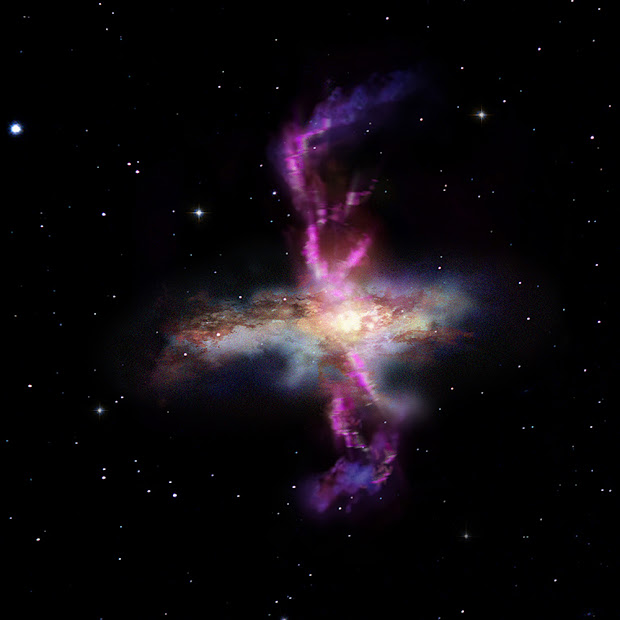Click on the image to enlarge
ESA's Herschel Space Observatory has detected massive amounts of molecular gas gusting at high velocities - in some cases in excess of 1000 kilometres per second - from the centers of a set of merging galaxies. Driven by star formation and central black holes, these powerful storms are strong enough to sweep away billions of solar masses of molecular gas and to interfere with global galactic processes. These observations indicate that, in the galaxies hosting the brightest Active Galactic Nuclei, outflows can clear the entire supply for creating stars and feeding the black hole. This finding provides long-sought-after evidence of highly energetic feedback processes taking place in galaxies as they evolve. The illustration above shows an Ultra-Luminous InfraRed Galaxy (ULIRG) that exhibits massive outflows of molecular gas. In one of the most widely accepted theories of galaxy evolution, ULIRGs are an intermediate stage in the merger-driven process that gives rise to elliptical galaxies. Within this framework, the merger of gas-rich spiral galaxies hosting supermassive black holes in their centres initially produces a galaxy with an active nucleus that is enshrouded by a mixture of gas and dust. In this phase, the object is completely obscured and can only be detected in infrared light as an ULIRG. As the system evolves, gas and dust are gradually dispersed, eventually giving rise to an exposed Active Galactic Nucleus - a quasar. Initially, it is the merger process that triggers starbursts and the growth of the central supermassive black hole in the galaxy. Later, the starburst and accretion by the black hole generate powerful gas outflows that sweep away the galaxy's reservoir of gas. Due to these negative feedback mechanisms - that at times suppress both star formation and black hole growth - the galaxy that forms from the merger is gas-poor, populated by old stellar populations and harbours a supermassive black hole with a mass that strongly correlates with the galaxy's stellar mass, as is observed in elliptical galaxies.
The detection of outflows powerful enough to strip galaxies of their molecular gas reservoir represents solid evidence in support of the merger-driven scenario for the formation of elliptical galaxies.
Credit: ESA/AOES Medialab










0 comment(s):
Post a Comment